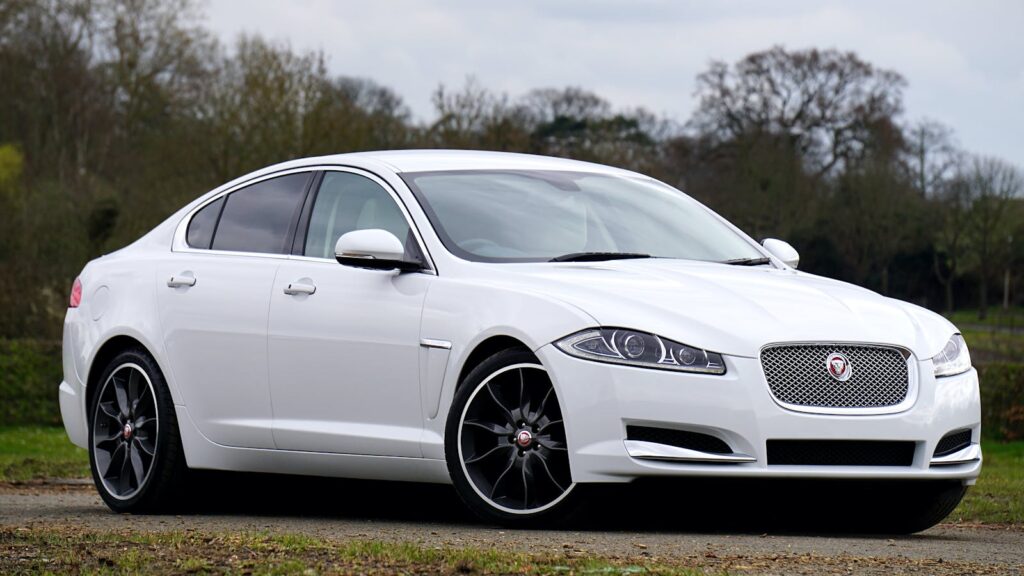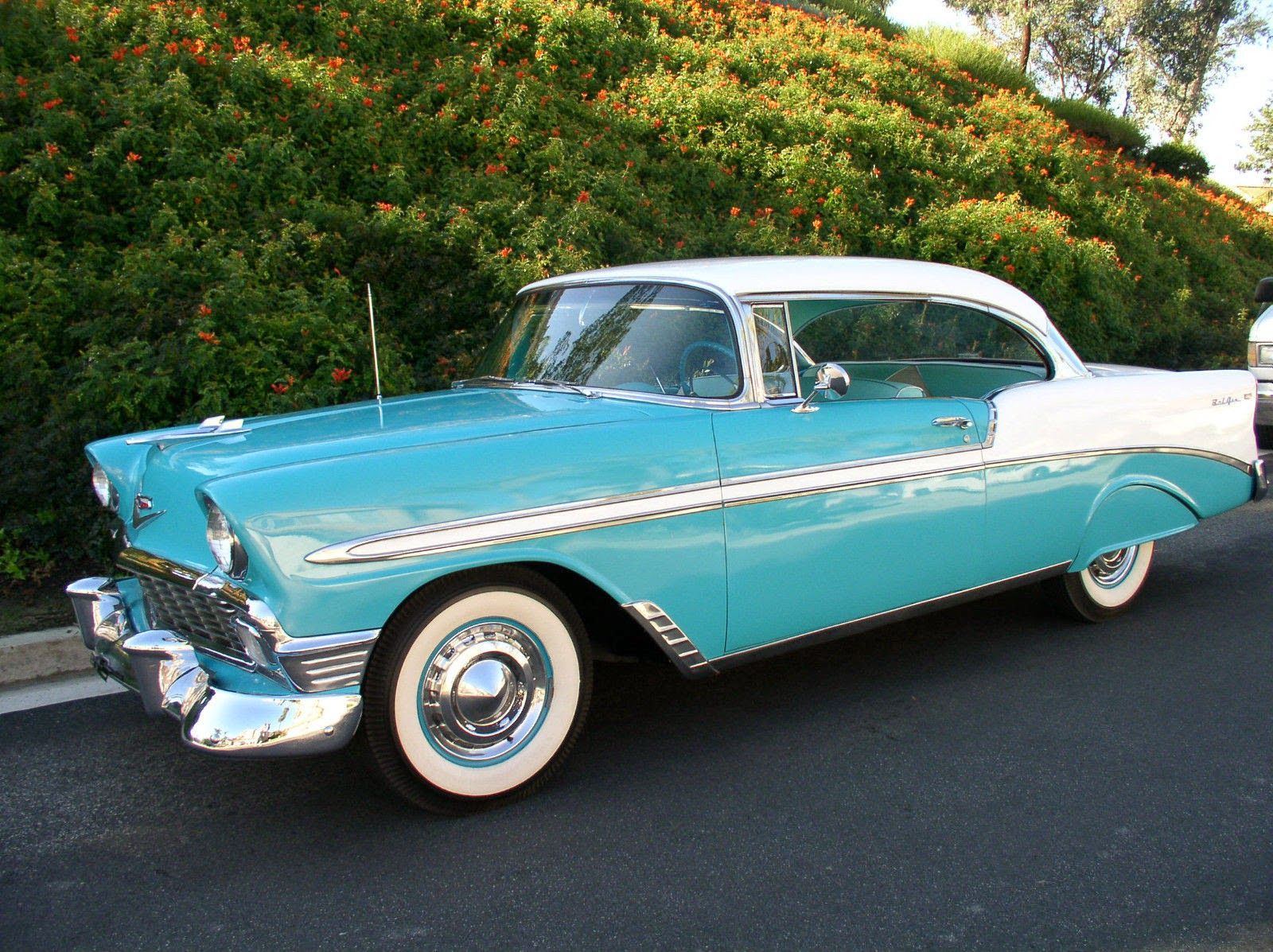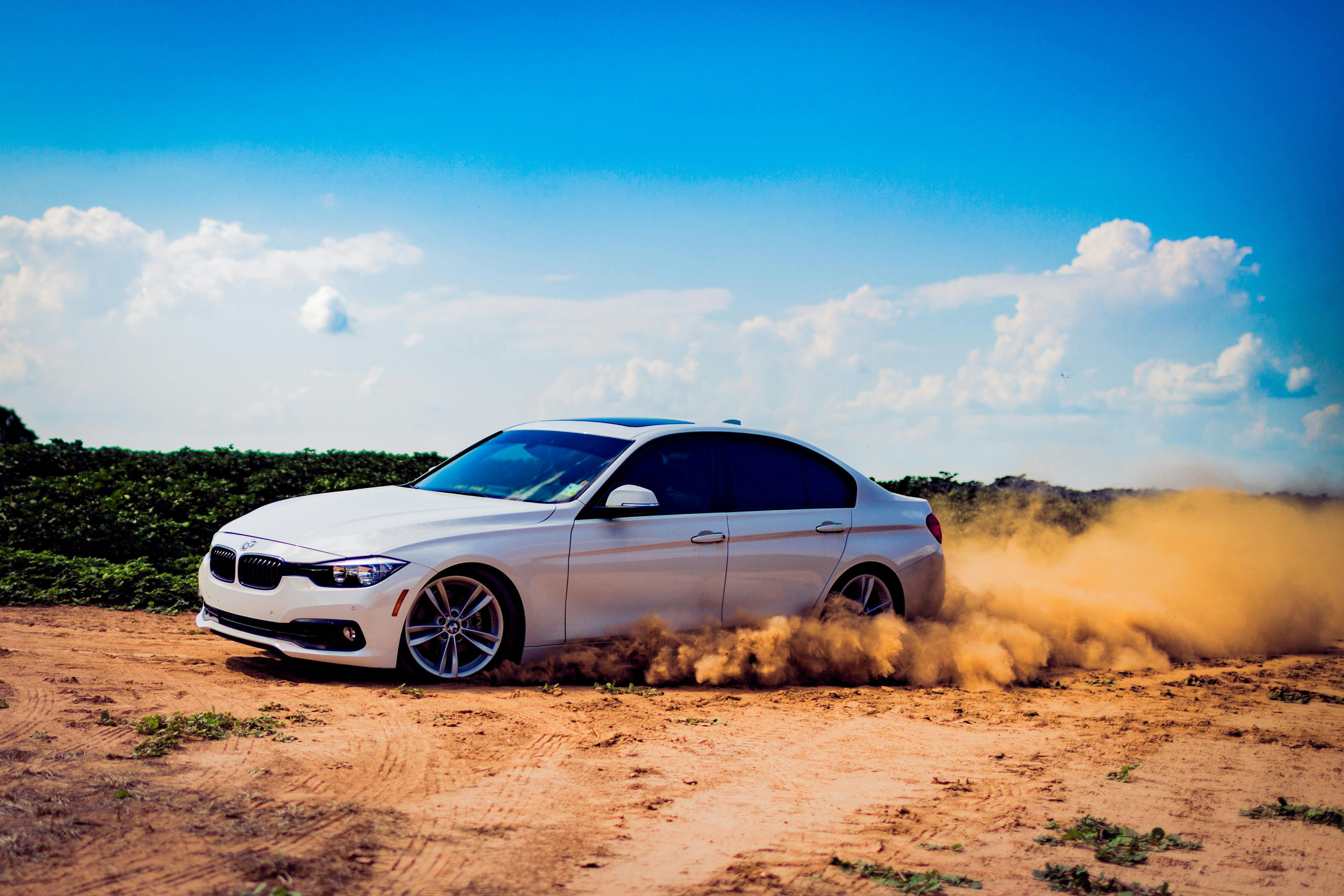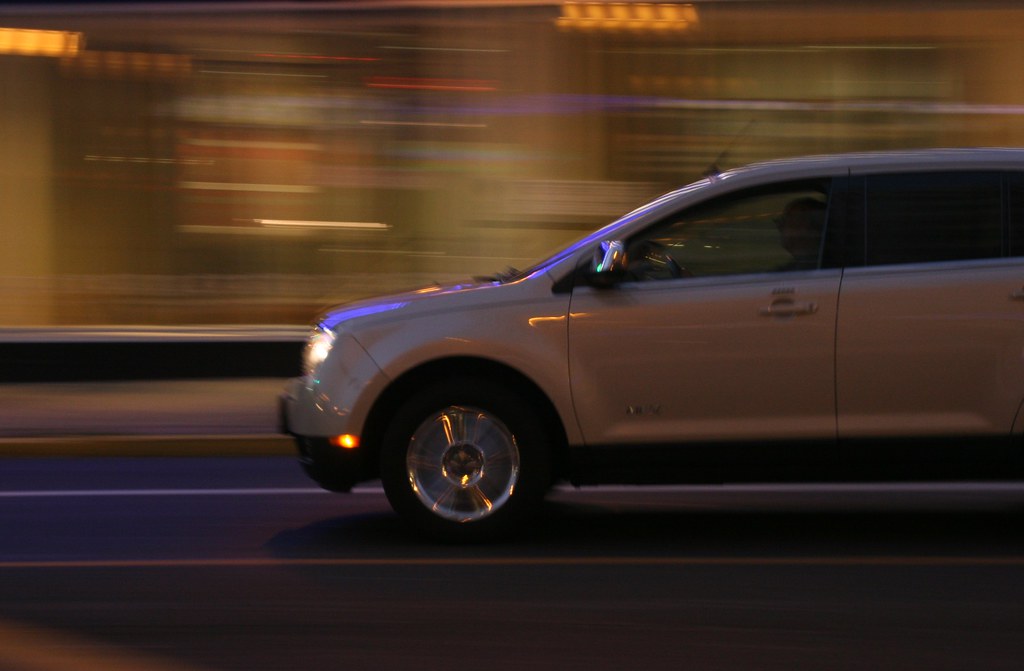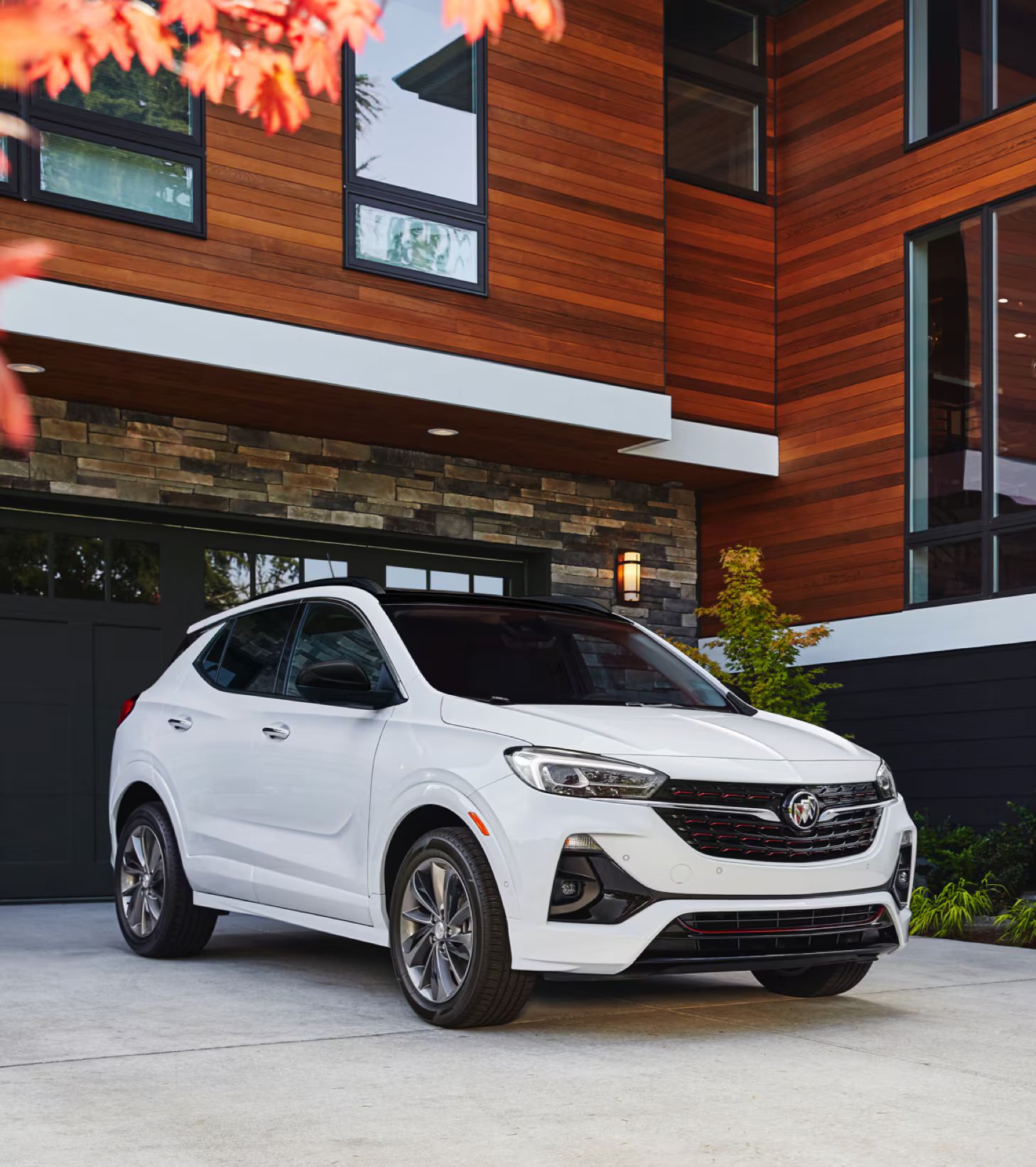
When it comes to making a statement on the road, few things compare to the sleek lines, opulent interiors, and commanding presence of a luxury sedan. These vehicles represent the pinnacle of automotive engineering, offering maximum comfort, advanced technology, and a driving experience designed to impress. The allure of getting behind the wheel of a prestigious marque, whether it’s a full-size luxury sedan or something with a bit more sporting pedigree, is undeniably strong for many discerning buyers.
However, the world of car buying, particularly in the luxury segment, can be fraught with hidden financial pitfalls. While the initial investment is considerable, the true cost of ownership often extends far beyond the sticker price. The most insidious of these costs, and one that silently erodes your financial outlay, is depreciation. It’s a well-known fact that cars are depreciating assets, but some shed their value with alarming speed, leaving owners facing a stark reality when it comes time to sell or trade in.
This article embarks on a journey to uncover the luxury sedans that, despite their initial grandeur, are notorious for plummeting in value faster than almost any other vehicle on the market. We’ll explore the underlying factors contributing to this rapid decline, from technological obsolescence and exclusivity to brand reputation, reliability concerns, and the exorbitant cost of maintenance and repairs. Understanding these dynamics is crucial for any savvy investor, budget-conscious buyer, or simply anyone looking to make a smart automotive decision, ensuring you’re not caught off guard by the silent drain of depreciation.
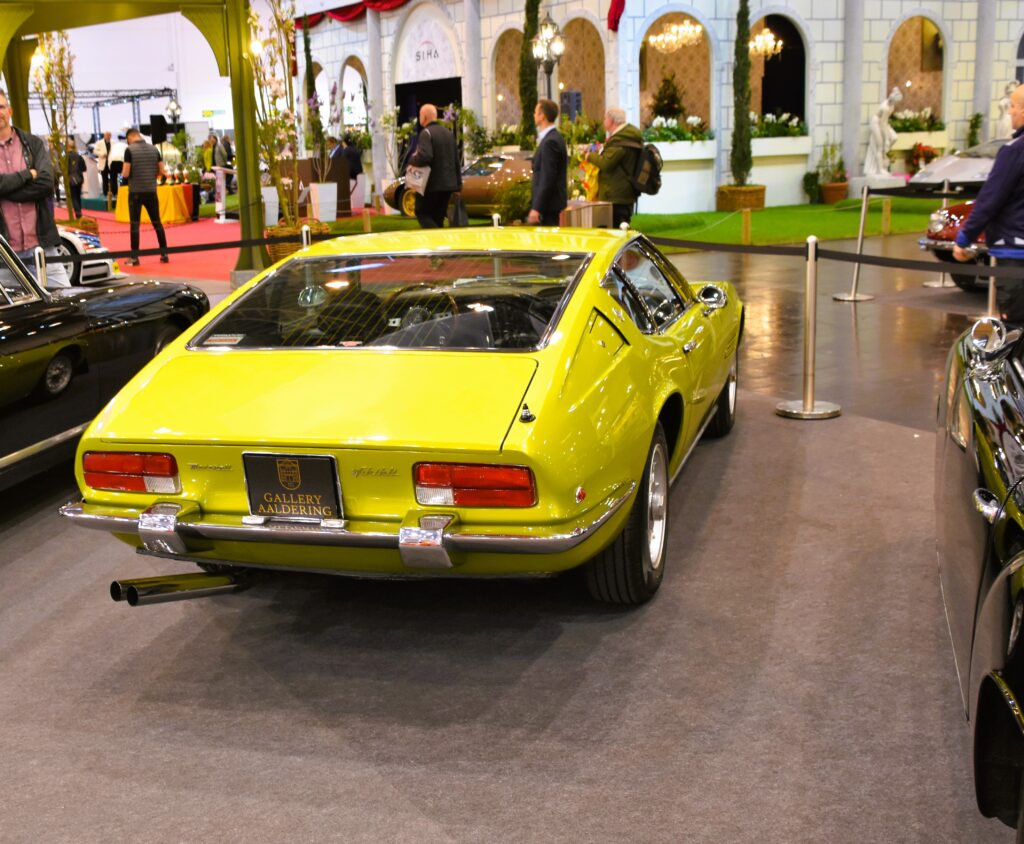
1. **Maserati Ghibli**The Maserati Ghibli, with its undeniable Italian flair and distinctive sports-sedan silhouette, embodies a unique blend of exotic appeal and everyday usability. For many, the sight of its trident badge and elegant curves is enough to justify the initial investment, promising a driving experience steeped in heritage and exclusivity. Yet, despite its captivating beauty and the aura of luxury it projects, the Ghibli has earned a notorious reputation as one of the fastest-depreciating vehicles within the highly competitive luxury segment.
Owners often discover that the initial joy of Ghibli ownership is quickly tempered by a significant and swift loss of value. Some models, according to industry observations, can shed over 60% of their original value in as little as 36 months, placing them squarely among the worst-depreciating vehicles globally. This dramatic plunge underscores a harsh reality: for all its visual charm, the Ghibli’s beauty often comes at an exceptionally steep financial cost when resale enters the equation.
Several key factors underpin the Ghibli’s struggles in retaining its value. Chief among these are widespread reliability and quality concerns, particularly evident in earlier production years, which have been plagued by reports of electrical gremlins, transmission issues, and inconsistent build quality. Such chronic problems inevitably deter would-be second-hand buyers who are wary of inheriting potentially expensive repairs. Furthermore, the cost of ownership is extraordinarily high, from specialized parts that are difficult to source outside of official channels to dealer-exclusive servicing, all of which contribute to a burdensome long-term financial commitment.
These pervasive reliability issues and the exorbitant cost of maintenance severely impact buyer confidence in the used market. Prospective purchasers are understandably less willing to take on the financial risk associated with a vehicle that has a history of costly breakdowns and specialized servicing requirements. Compounding this, many critics argue that the Ghibli lacks the outright performance and refinement necessary to truly compete with its German rivals in a similar price bracket, often being labeled as a “style-over-substance purchase.” While it undeniably turns heads at a red light, the Maserati Ghibli quickly transforms into a tough sell after just a few years, depreciating far more rapidly than most owners anticipate or desire.
Car Model Information: 2015 Maserati Ghibli S Q4
Name: Maserati Ghibli
Caption: 2018 Maserati Ghibli GranLusso
Manufacturer: Maserati
Assembly: Modena,Grugliasco,Turin
Class: Grand tourer,Executive car
BodyStyle: fastback,coupé,Roadster (automobile),Sedan (automobile)
Production: AM115: 1967–1973,AM336: 1992–1998,M157: 2013–2023
Categories: 1970s cars, 1990s cars, 2010s cars, Articles with short description, CS1 Italian-language sources (it)
Summary: Maserati Ghibli is the name of three different cars produced by Italian automobile manufacturer Maserati: the AM115, a V8 grand tourer from 1967 to 1973; the AM336, a V6 twin-turbocharged coupé from 1992 to 1998; and the M157, an executive saloon from 2013 to 2023.
Ghibli is the Libyan Arabic name for the hot dry south-westerly wind of the Libyan desert.
Get more information about: Maserati Ghibli
Buying a high-performing used car >>>
Brand: Maserati Model: Ghibli
Price: $16,498 Mileage: 74,452 mi.
Read more about: Beyond the Hype: 15 Classic Cars That Will Break Your Heart (and Wallet) – A Jalopnik Guide for Enthusiasts
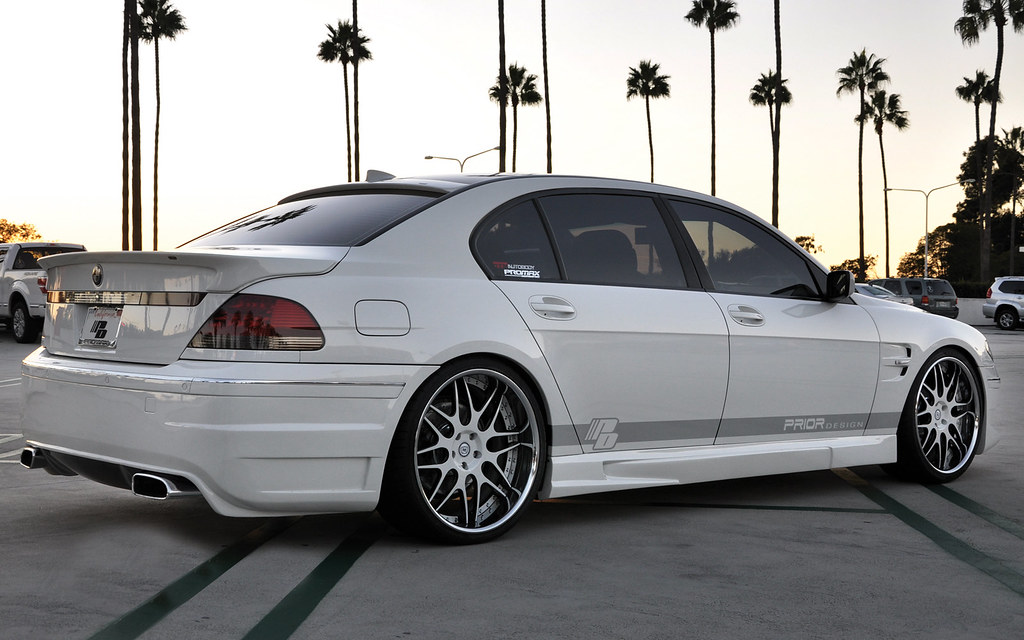
2. **BMW 7 Series**The BMW 7 Series stands as the flagship luxury sedan from the Bavarian automaker, a vehicle designed to exude power, sophistication, and cutting-edge technology. For decades, it has been a symbol of executive transport, offering an unparalleled blend of comfort, dynamic driving capabilities, and a cabin replete with the latest innovations. Yet, for all its engineering prowess and the undeniable prestige of the BMW badge, the 7 Series is consistently cited as one of the worst offenders when it comes to vehicle depreciation, making it a challenging proposition for those concerned with long-term financial retention.
The figures associated with its depreciation are truly startling; within just three years of ownership, this high-end sedan can lose well over 50-60% of its original value. This rapid erosion of worth is particularly shocking given the 7 Series’ substantial initial purchase price, transforming what began as a significant investment into a rapidly diminishing asset. The market for used luxury flagships is a brutal one, and the 7 Series finds itself caught in its unforgiving currents.
Part of the problem stems from the sheer abundance of used models that flood the market, often as the result of short-term lease agreements. Many buyers are initially lured by the promise of the latest technological advancements and lavish features that characterize a new 7 Series, only to discover that the resale market does not place the same premium on these perks as the car ages. The constant influx of off-lease vehicles drives prices down, creating an environment where supply often far outstrips demand for older models.
Beyond market saturation, maintenance and repair costs play an enormous role in the 7 Series’ rapid depreciation. These are incredibly complex machines, packed with high-end electronics, sophisticated turbocharged engines, and active suspension systems. While these components contribute to an exceptional driving experience when new, they quickly become liabilities as the vehicle ages. Once a 7 Series moves out of its warranty period, the cost to repair or replace even a few of these advanced systems can easily exceed what many potential used car buyers are willing to pay, making the prospect of long-term ownership a daunting financial commitment. This, combined with a perception issue where the 7 Series, despite its technical marvels, lacks the “emotional or collector appeal” of classic BMW performance models, makes it a prime example of a luxury car that sheds its value faster than almost any other in its class.
Car Model Information: 2025 Genesis GV80 3.5T
Name: BMW 7 Series
Caption: BMW 7 Series (G11)
Manufacturer: BMW
Production: 1977–present
Class: Full-size car,luxury car
BodyStyle: sedan (car)
Predecessor: BMW New Six
Categories: All articles with dead external links, Articles with dead external links from July 2021, Articles with short description, BMW vehicle series, CS1 Chinese-language sources (zh)
Summary: The BMW 7 Series is a full-size luxury sedan manufactured and marketed by the German automaker BMW since 1977. It is the successor to the BMW E3 “New Six” sedan and is now in its seventh generation.
The 7 Series is BMW’s flagship car and is only available in a sedan bodystyle (including long wheelbase and limousine models). It traditionally introduces technologies and exterior design themes before other models in BMW’s lineup.
The first generation of the 7 Series was powered by straight-6 petrol engines, and following generations have been powered by inline-4, straight-6, V8 and V12 engines with both natural aspiration and turbocharging. Since 1995, diesel engines have been optional in the 7 Series.
Unlike the BMW 3 Series and BMW 5 Series sedans, BMW does not offer a full M model, but once offered an M performance variant, the BMW M760 with its 6.6L V12 (at the time the most powerful BMW ever made, not to be confused with BMW 760 6.6 V12 which does not offer the same performance). The Alpina B7 served as the high-performance variant of the 7 Series.
Get more information about: BMW 7 Series
Buying a high-performing used car >>>
Brand: BMW Model: 7 Series
Price: $63,683 Mileage: 5,413 mi.
Read more about: Unearthing Minnesota’s Automotive Treasures: An In-Depth Look at Its Premier Vintage Truck Collections
3. **Jaguar XF**The Jaguar XF sedan, with its sleek, undeniably stylish exterior and a luxurious interior, presents itself as a compelling alternative to the German luxury establishment. It promises athletic handling, a refined driving experience, and that distinctive British charm. However, when the conversation shifts to resale value, the XF unfortunately stands out as one of the worst performers in its highly competitive class. While luxury cars generally depreciate faster than their mainstream counterparts, the XF appears to tumble particularly hard and fast.
It is not uncommon to witness the value of an XF plummet by 55-60% or even more after just three years on the road. This precipitous drop can be a painful realization for original owners, who bought into the promise of luxury and performance, only to see their investment rapidly diminish. Despite its elegant cabin and dynamic capabilities, used car buyers often remain profoundly wary of long-term ownership, a hesitation rooted deeply in Jaguar’s historical reputation for inconsistent reliability and the notoriously high maintenance costs associated with the brand.
One significant contributing factor to this rapid devaluation is that Jaguar, as a brand, simply does not command the same level of resale respect or trust as its primary rivals, such as BMW, Mercedes-Benz, or Audi. Although the XF directly competes within the same premium space, it noticeably lacks the widespread dealership network and the deeply ingrained, long-term confidence that buyers typically associate with the established German luxury marques. This disparity renders the XF a relatively risky proposition for used-car shoppers, who judiciously weigh factors like the availability of parts, diverse service options, and overall brand durability before committing to a purchase—areas where Jaguar has historically struggled to consistently meet expectations.
Furthermore, the XF’s technology and interior design, while elegant at launch, have struggled to keep pace with the swift advancements seen in its tech-forward rivals like the Audi A6 or Mercedes E-Class. Older XF models, in particular, have received criticism for infotainment systems that can be laggy in performance and complicated to navigate, failing to offer the seamless user experience expected in a modern luxury vehicle. When these concerns about aging technology, perceived reliability issues, and expensive upkeep are combined with such rapid depreciation, it becomes unequivocally clear why the XF finds it difficult to hold its value. For those in the market for an affordable used luxury car, the XF might present an appealing option, but for the original owner, it almost invariably represents a significant and painful financial loss.
Car Model Information: 2021 Jaguar XF SE
Categories: All set index articles, Articles with short description, Jaguar vehicles, Set index articles, Short description is different from Wikidata
Summary: Jaguar XF may refer to:
Jaguar XF (X250) (2007–2015), an executive/luxury mid-size sports saloon car
Jaguar XF (X260) (2015–2024), the second generation of the executive/mid-size luxury sports saloon
Get more information about: Jaguar XF
Buying a high-performing used car >>>
Brand: Jaguar Model: XF
Price: $34,995 Mileage: 32,933 mi.
Read more about: The Platinum Pain: 15 Luxury Vehicles That Secretly Punish Their Owners with Sky-High Costs

4. **Cadillac XTS**The Cadillac XTS was introduced as a full-size luxury sedan designed to offer a plush interior, a smooth, quiet ride, and a distinctly American take on premium motoring. It was meant to be a flagship offering, appealing to buyers who appreciated comfort and traditional luxury. However, despite these attributes, the XTS experienced notably heavy depreciation throughout its production run, particularly given its positioning within an intensely competitive luxury sedan market. This rapid loss of value was a consistent challenge for the model.
A primary reason for the XTS’s struggles in value retention lies in the fierce competition it faced. The segment it occupied was—and still is—dominated by well-established and technologically advanced models from European and Asian luxury brands. These competitors, known for their strong brand recognition, cutting-edge features, and traditionally better resale values, often overshadowed the XTS in the minds of potential buyers. As a result, the Cadillac XTS was frequently overlooked, even with its comfortable ride and refined cabin.
Compounding these market dynamics were the XTS’s high initial purchase cost and the broader challenges faced by the Cadillac brand concerning resale values. While Cadillac is a storied American luxury marque, its performance in the used car market has, at times, lagged behind its international rivals. This combination of a high entry price and a brand that struggles to maintain strong residual values in certain segments created a significant deterrent for second-hand buyers. They were less willing to pay a premium for a used XTS when other luxury options, often perceived as having better long-term value or more desirable features, were available.
Ultimately, the Cadillac XTS became a cautionary tale of a luxury sedan that, despite its inherent qualities, found itself unable to withstand the pressures of market competition and brand perception. Its inability to distinguish itself sufficiently from its rivals, coupled with a challenging resale environment for its brand, led to a depreciation curve that quickly turned an initial luxury investment into a rapidly diminishing asset for its owners. This makes it a prime example of why thorough research into a vehicle’s long-term value is as crucial as appreciating its immediate comforts and features.
Car Model Information: 2017 Cadillac XTS Luxury
Name: Cadillac XTS
Caption: 2014 Cadillac XTS Luxury
Manufacturer: Cadillac
Production: Canada and US: May 2012–October 2019,China: February 2013–2020
ModelYears: 2013–2019,2014–2020 (China)
Assembly: Oshawa, Ontario
Designer: Tim Kozub,Christine Park (interior)
Class: Full-size car
BodyStyle: sedan (automobile)
Platform: GM Epsilon platform#Epsilon II
Related: Chevrolet Impala#10,Buick LaCrosse#Second generation (2010),Saab 9-5#2
Layout: Front-engine, front-wheel-drive layout
Engine: ubl
Transmission: GM 6T70 transmission,GM 6T75 transmission
Wheelbase: 111.7 in
Abbr: on
Length: 201.9 in
Width: 72.9 in
Height: 59.1 in
Weight: 3995 lb
Sp: us
Predecessor: Cadillac DTS,Cadillac STS
Successor: Cadillac CT5
Categories: 2010s cars, All-wheel-drive vehicles, Articles with short description, Cadillac vehicles, Cars introduced in 2012
Summary: The Cadillac XTS (short for X-Series Touring Sedan) is a full-size car built by the American company Cadillac from 2013 until 2019. It is a four-door sedan with seating for up to five passengers. Based on an enlarged version of the Epsilon II platform, it has a front-mounted engine that either drives the front wheels or drives all four wheels.
Replacing the smaller Cadillac STS and larger DTS, production began in May 2012 at the Oshawa Assembly Plant and launched in June as a 2013 model. Marketed with left-hand drive in the United States, Canada, Mexico, China, and the Middle East (except Israel), the XTS was also assembled by Shanghai GM, with production beginning in February 2013.
Get more information about: Cadillac XTS
Buying a high-performing used car >>>
Brand: Cadillac Model: XTS
Price: $11,465 Mileage: 167,001 mi.
Read more about: The Hollywood Ending That Was a Lie: Unveiling the Stars’ Secret Financial Ruin

5. **Buick LaCrosse**The Buick LaCrosse, a full-size sedan, represented Buick’s efforts to blend traditional American comfort with modern styling and features, aiming for a sophisticated yet accessible luxury experience. It offered a spacious interior, a comfortable ride, and an array of amenities designed to appeal to those seeking a premium sedan without the steeper price tag of European rivals. However, despite these efforts, the LaCrosse quickly found itself battling against significant depreciation, making it another example of a vehicle whose resale value vanished surprisingly fast.
One of the most persistent challenges the Buick LaCrosse faced was a widespread perception that it was an “old person’s car.” This unfortunate stereotype, whether entirely fair or not, significantly limited its appeal to a broader, younger demographic of car buyers. In an automotive market increasingly driven by trends and a desire for vehicles that convey a sense of modernity and dynamism, being labeled as outdated can be a death knell for resale value, regardless of the car’s actual capabilities or comfort.
Furthermore, the LaCrosse operated within a shrinking full-size sedan market, a segment that has been steadily losing ground to the surging popularity of SUVs and crossovers. As consumer preferences shifted dramatically, demand for large sedans dwindled, intensifying competition among the remaining models. In this environment, the LaCrosse often found itself overlooked in favor of more popular and dynamically styled sedans from both luxury and non-luxury brands that had a stronger brand image or more compelling marketing.
The general decline in demand for sedans, combined with Buick’s relatively modest brand cachet in the luxury market, further exacerbated its depreciation issues. While Buick has a loyal customer base, it doesn’t command the same aspirational appeal or perceived long-term value as some of its more premium competitors. This meant that when a LaCrosse entered the used car market, there was a smaller pool of interested buyers, leading to lower demand and, consequently, lower resale prices. For owners, this translated into a quick and substantial loss on their initial investment, underscoring the critical importance of understanding market trends and brand perception when evaluating a car’s long-term financial viability.
Car Model Information: 2012 Buick LaCrosse Leather
Name: Buick LaCrosse
Manufacturer: Buick
Production: September 7, 2004 – February 15, 2019 (US),February 2006–present (China)
ModelYears: 2005–2019 (US),2006–present (China)
Aka: Buick Allure (Canada, 2005–2010),Alpheon (South Korea, 2010–2015)
Predecessor: Buick Century
Class: Mid-size car
BodyStyle: Sedan (automobile)
Layout: Front-engine, front-wheel-drive layout,Front-engine, four-wheel-drive layout
Categories: 2010s cars, 2020s cars, All Wikipedia articles written in American English, All articles with unsourced statements, Articles with Chinese-language sources (zh)
Summary: The Buick LaCrosse is a four-door, front-wheel-drive sedan manufactured by Buick since model year 2005, and marketed variously across four generations for the North American and Chinese markets.
The first-generation LaCrosse replaced the Century and Regal in North America beginning for model year 2005 as a five- or six-passenger, four-door, front-wheel-drive, V6-powered sedan using GM’s mid-size W platform—and marketed in Canada as the Buick Allure. Notably, the first generation was also offered with a V8 engine, as a high-performance sub-model marketed as the LaCrosse Super (2008–2009). LaCrosse production and marketing began for China with model year 2006.
The second-generation LaCrosse was introduced for 2010 as a larger premium sedan for North American and Chinese markets using a long-wheelbase (LWB) variant of the Epsilon II platform shared with the Cadillac XTS—and available solely as a five-passenger sedan with a range of four- and six-cylinder engines.
The third generation was introduced for North America and China for model year 2017 using the GM Epsilon platform shared with the Chevrolet Impala, notably offering a mild hybrid powertrain combining 20-kilowatt (27 hp) electric and 2.5-liter Ecotec gasoline engine. North American production ended with the third generation, with model year 2019; however, it continued to be offered in China, with a 2019 facelift.
The fourth-generation LaCrosse, launched in 2023, is currently manufactured and marketed solely in China. It is powered by a turbocharged 1.5-liter or 2.0-liter four-cylinder engine.
Get more information about: Buick LaCrosse
Buying a high-performing used car >>>
Brand: Buick Model: LaCrosse
Price: $8,765 Mileage: 91,979 mi.
Read more about: Smart Buys for 2025: 12 Rock-Solid Used Cars That Deliver Value and Reliability (Before Prices Climb)
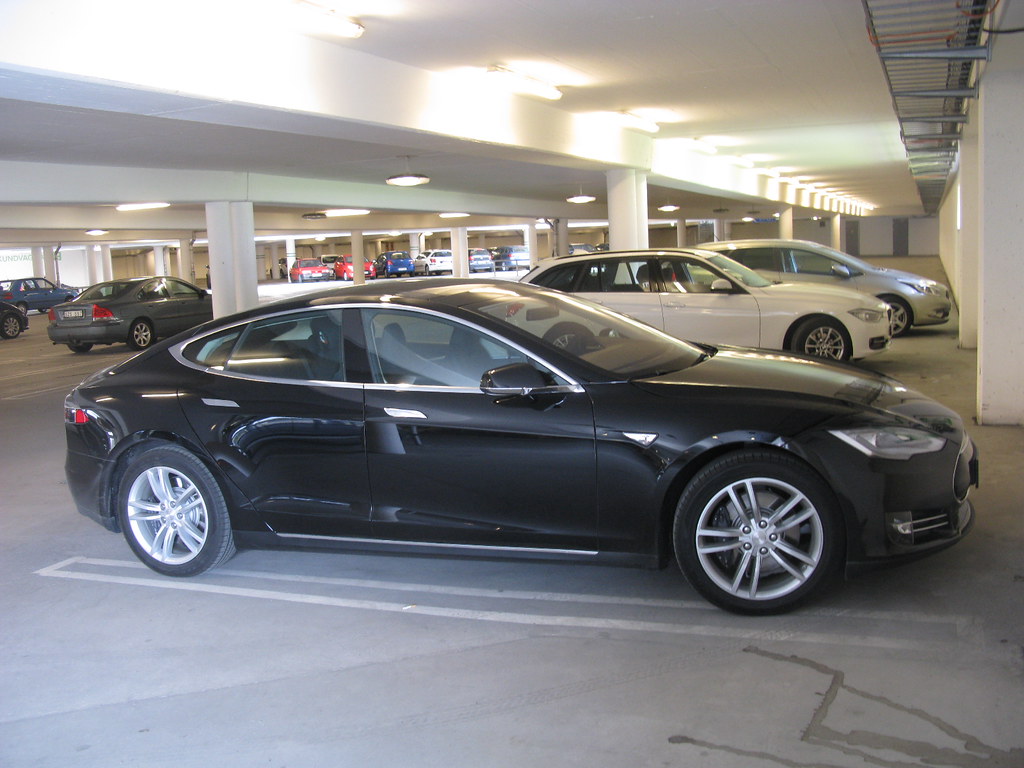
6. **Tesla Model S**The Tesla Model S, initially hailed as a groundbreaking electric luxury sedan, pioneered the EV segment with its impressive range, blistering performance, and minimalist, tech-forward interior. For many early adopters, it represented the future of automotive luxury. However, the rapid pace of innovation within the electric vehicle market, coupled with unique concerns inherent to EV ownership, has made the pre-owned Model S a challenging proposition for resale value retention.
Prospective buyers of a used Tesla Model S face a significant apprehension regarding expensive battery failures. As Chris Pyle, an auto expert and mechanic at JustAnswer, succinctly put it, “Every day you own an electric car, the distance you can travel drops a few tenths of a percent.” This means that a vehicle once capable of 300 miles on a full charge might only achieve 270 miles after three years, a tangible reduction in value that directly impacts desirability and usability for second-hand owners.
Furthermore, the technological upgrades within the Tesla brand itself are relentless, akin to the rapid evolution seen in cell phones. What was once cutting-edge can quickly become outdated. Pyle likened buying an old Tesla to acquiring a flip phone, emphasizing that its value is bound to depreciate significantly as newer, more advanced models with superior range and features enter the market. This constant quest for the “latest and greatest” means older models struggle to compete.
Adding to these challenges, the market for pre-owned Teslas has reportedly seen even lower trading values recently. This downturn is largely due to the increased competition from a growing number of other EV automakers. As more manufacturers introduce compelling electric alternatives, the exclusivity and perceived innovation edge of older Tesla models diminish, further eroding their resale value on the open market, making them a significant depreciation risk.
Car Model Information: 2025 Genesis GV80 3.5T
Name: Tesla Model S
ModelYears: 2013–present
Alt: A front-three quarter view of a gray Model S
Caption: #2016–2019: First major update
Designer: Franz von Holzhausen
Weight: cvt
Height: cvt
Width: cvt
Length: cvt
Wheelbase: cvt
ElectricRange: cvt
Battery: kWh,lithium-ion battery
Motor: Unbulleted list
Transmission: Reduction drive
Related: Tesla Model X
Layout: Rear-motor, rear-wheel drive,Dual-motor, all-wheel-drive,Tri-motor, all-wheel-drive layout
BodyStyle: liftback,sedan (automobile)
Class: Full-size car
Assembly: Unbulleted list
Production: June 2012 – present
Manufacturer: Tesla, Inc.
Sp: us
Chassis: Unibody
Categories: 2020s cars, All-wheel-drive vehicles, All Wikipedia articles written in American English, All articles containing potentially dated statements, Articles containing potentially dated statements from 2025
Summary: The Tesla Model S is a battery-electric, four-door full-size car produced by the American automaker Tesla since 2012. The automaker’s second vehicle and longest-produced model, the Model S has been described as one of the most influential electric cars in the industry. Car and Driver named it one of the best cars of the year in 2015 and 2016. Its various accolades include the Motor Trend Car of the Year Award in 2013.
Tesla started developing the Model S around 2007 under the codename WhiteStar. Initially, Henrik Fisker was appointed as the lead designer for the WhiteStar project; after a dispute with Elon Musk, Tesla’s CEO, Fisker was replaced by Franz von Holzhausen. By 2008, von Holzhausen had designed what would become the production Model S’s exterior. Tesla unveiled a prototype of the vehicle in March 2009 in Hawthorne, California. In 2010, Tesla acquired a facility in Fremont, California, to produce the Model S, which was previously owned by General Motors and Toyota. Series manufacture of the car officially began at the Tesla Fremont Factory in June 2012. Tesla carried out the final assembly for European markets at its facilities in Tilburg, Netherlands, between 2013 and 2021.
The Model S typically uses either one or initially two alternating current induction motors; since 2019, dual-motor versions have used a permanent magnet motor in the front, though the high-performance Model S Plaid’s three motors are permanent magnet units by default. Constructed mostly of aluminum, the Model S shares 30 percent of its components with the Model X—a crossover SUV that was introduced in 2015. The Model S has undergone several updates during its production, the most prominent ones occurring in 2016 and 2021. These updates have usually included modifications to the motor, such as changes to power or torque, revised exterior elements, and refreshed interior features. One such change included the 2015 introduction of Tesla Autopilot—a partial vehicle automation advanced driver-assistance system.
In 2015, the Model S was the world’s best-selling plug-in electric vehicle. In 2012, it was included on Time’s list of the Best Inventions of the Year, and the magazine later included it on its list of the 10 Best Gadgets of the 2010s in 2019. In 2014, The Daily Telegraph described the Model S as a “car that changed the world”. Road & Track argued that, with the introduction of the Plaid and features such as the yoke steering wheel, Tesla managed to turn the Model S into “perhaps one of the worst [cars in the world]”.
Get more information about: Tesla Model S
Buying a high-performing used car >>>
Brand: Tesla Model: Model S
Price: $63,683 Mileage: 5,413 mi.
Read more about: Unearthing the Automotive Ghosts: 14 Forgotten Two-Seater Sports Cars That Demand Your Attention
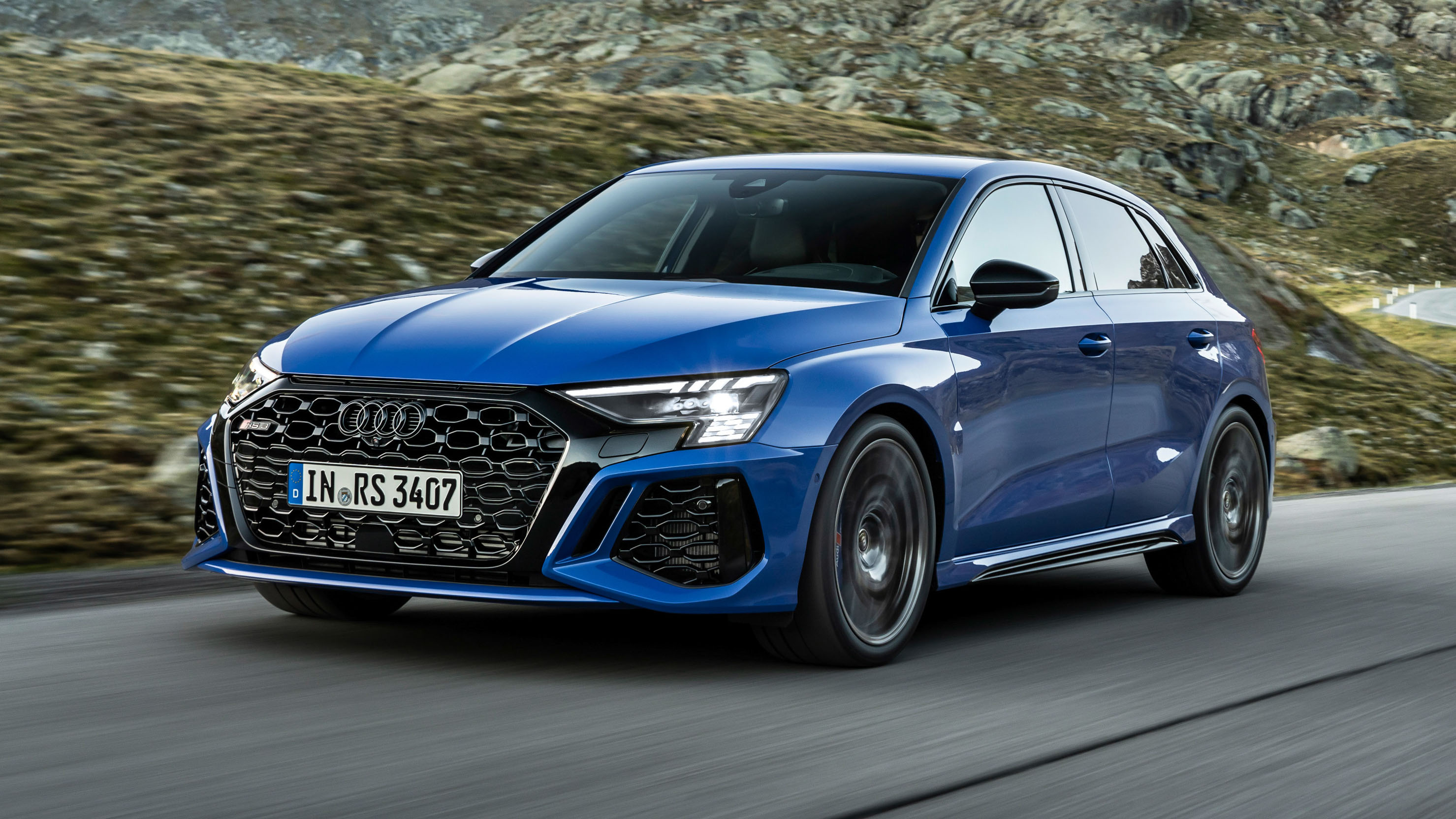
7. **Audi A-Series Luxury Sedans**Audi’s lineup of luxury sedans, including models like the A3, A4, A5, A6, S4, and Q5, embodies sophisticated design, refined performance, and premium interiors. While the brand carries a certain prestige, several specific models within its A-Series range are notorious for experiencing drastic depreciation over time. This trend occurs despite some Audi vehicles demonstrating better value retention than other luxury marques, highlighting a disparity within the brand’s own portfolio.
According to Jamie Mitri, manager at Cumberland Auto Sales and Services, the primary culprits behind the plummeting resale value of these particular Audi sedans are their costly parts, expensive repairs, and comprehensive warranty considerations. As high-performance luxury vehicles, their components are specialized and intricate, leading to substantial service bills once the initial factory warranty expires. This financial burden makes them a less attractive option for budget-conscious used car buyers.
Adding another layer to their depreciation woes, auto expert Chris Pyle noted that these specific Audi models “were priced too high from the get-go and often are sold over MSRP value.” This initial overpayment exacerbates the depreciation issue. Owners not only face a loss in the car’s intrinsic value as it ages but also effectively lose the additional amount they paid above the manufacturer’s suggested retail price, magnifying their overall financial setback.
Therefore, the combination of high initial purchase prices, which sometimes includes dealer markups, coupled with the consistently steep costs associated with maintenance and repairs, forms a powerful deterrent in the secondary market. Buyers are understandably hesitant to invest in a used luxury vehicle that promises ongoing, significant financial outflows. This makes certain Audi A-Series models a prime example of luxury that demands a hefty premium both upfront and throughout its ownership, leading to a substantial depreciation hit.
Car Model Information: 2022 Audi Q5 45 S line Premium
Name: Audi AG
Logo: File:Audi-Logo 2016.svg
Type: Subsidiary
Predecessors: Auto Union,Auto Union,Wanderer (company),NSU Motorenwerke
Founder: August Horch
AreaServed: Worldwide
KeyPeople: Gernot Döllner
Industry: Automotive industry
Products: Luxury vehicle
Production: decrease 1,692,548 units
Revenue: 1,000,000,000 (number)
OperatingIncome: decrease €3.903 billion (2024)
NetIncome: decrease €4.189 billion (2024)
Assets: decrease €73.097 billion (2024)
Equity: increase €35.882 billion (2024)
NumEmployees: 88,604 (12/2024)
Parent: Volkswagen Group
Divisions: bulleted list
Subsid: bulleted list
Footnotes: Audi History: Chronicle,
Foundation: Zwickau,Chemnitz,Ingolstadt,Neckarsulm
LocationCity: Ingolstadt
LocationCountry: Germany
Locations: 13 production facilities in 10 countries
Website: https://www.audi.com/en.html|audi.com
Categories: All Wikipedia articles in need of updating, All articles containing potentially dated statements, All articles with unsourced statements, Articles containing German-language text, Articles containing Italian-language text
Summary: Audi AG (German: [ˈaʊ̯di ʔaːˈɡeː] ) is a German automotive manufacturer of luxury vehicles headquartered in Ingolstadt, Bavaria, Germany. A wholly owned subsidiary of the Volkswagen Group, Audi produces vehicles in nine production facilities worldwide.
The origins of the company are complex, dating back to the early 20th century and the initial enterprises (Horch and the Audiwerke) founded by engineer August Horch. Two other manufacturers (DKW and Wanderer) also contributed to the foundation of Auto Union in 1932. The modern Audi era began in the 1960s, when Auto Union was acquired by Volkswagen from Daimler-Benz. Volkswagen relaunched the Audi brand with the 1965 introduction of the Audi F103 series, and merged Auto Union with NSU Motorenwerke in 1969, thus creating the present-day form of the company.
The company name is based on the Latin translation of the surname of the founder, August Horch. Horch, meaning ‘listen’, becomes audi in Latin. The four rings of the Audi logo each represent one of four car companies that banded together to create Audi’s predecessor company, Auto Union. Audi’s slogan is Vorsprung durch Technik, which is translated as ‘Progress through Technology’. Audi became a sister to Dr. Ing. h.c. F. Porsche AG (more commonly known as Porsche AG) following Volkswagen Group’s 100% acquisition of the latter in 2012, and along with German brands BMW and Mercedes-Benz, is among the best-selling luxury automobile brands in the world.
Get more information about: Audi
Buying a high-performing used car >>>
Brand: Audi Model: A-Series
Price: $26,228 Mileage: 44,038 mi.
Read more about: Golden Years, Chrome Dreams: Unlocking the Hobby and Investment Potential of Classic Cars for Retirees

8. **Chrysler 300**The Chrysler 300 made a bold entrance into the automotive world, captivating buyers with its aggressive styling and the allure of available HEMI V8 power. Its distinctive presence carved out a unique niche, representing a defiant American take on the full-size sedan. However, despite its initial impact, time has not been particularly kind to the Chrysler 300, as it now consistently ranks among the vehicles that experience the quickest depreciation in the market.
Within a mere five years, a Chrysler 300 can shed well over 50% of its original value, a stark reality for many owners. This rapid decline is largely attributed to a significant shift in consumer preferences, with buyers increasingly gravitating towards crossovers and more fuel-efficient sedans. Consequently, the 300, with its traditional large sedan format, is often perceived as a relic of a bygone era, struggling to remain relevant in a dynamically changing automotive landscape.
A major contributing factor to the Chrysler 300’s struggles is its aging design platform. The current generation has seen only minor modifications since its introduction in 2011, making its aesthetic and technological offerings feel increasingly outdated when compared to its more modern rivals. Its interior technology, driving dynamics, and fuel economy figures noticeably lag behind the competition, making it a difficult sell for new car buyers and an even less appealing prospect on the competitive resale market.
Brand perception also plays a crucial role in the 300’s depreciation curve. Chrysler, as a brand, has not consistently maintained the strongest reputation for long-term reliability, and the 300 model itself has encountered its share of quality concerns over the years. This, combined with higher insurance costs and a broader decline in interest for large sedans, results in a steep and unavoidable depreciation curve for the vehicle, turning what was once a distinctive statement into a significant financial loss for its owners.
Car Model Information: 2020 Chrysler 300 Touring
Name: Chrysler 300
Aka: Lancia Thema
Manufacturer: Chrysler (automotive brand)
Production: February 1, 2004– December 2023
ModelYears: 2005–2023
Class: Executive car
Layout: Front-engine, rear-wheel-drive layout,automobile layout
Predecessor: Chrysler 300M,Chrysler Concorde,Chrysler Intrepid
Categories: 2010s cars, All articles with dead external links, All articles with unsourced statements, Articles with dead external links from June 2025, Articles with short description
Summary: The Chrysler 300 is a full-size car manufactured and marketed by Stellantis North America and its predecessor companies. It was available as a four-door sedan and station wagon in its first generation (model years 2005–2010), and solely as a four-door sedan in its second generation (model years 2011–2023).
The second generation 300 was marketed as the Chrysler 300C in the United Kingdom and Ireland and as the Lancia Thema in the remainder of Europe.
Get more information about: Chrysler 300
Buying a high-performing used car >>>
Brand: Chrysler Model: 300
Price: $20,628 Mileage: 31,223 mi.
Read more about: Planning on Trouble? The 14 Engines and Models Most Likely to Leave You Stranded Before 100,000 Miles

9. **Kia Cadenza**The Kia Cadenza was a full-size sedan designed to offer luxury-like features and a comfortable ride at a highly competitive price point, aiming to punch above its weight class in terms of perceived value. Despite its upscale appearance and a host of amenities, the Cadenza unfortunately struggles immensely with poor resale value. A primary hurdle it faces is its status as a less recognized nameplate, which significantly hinders its appeal in the crowded and discerning used car market.
While Kia has made remarkable strides in improving its quality and reliability over recent years, establishing a solid reputation in the industry, brand perception is often slow to catch up with actual product improvement. Many used car buyers remain hesitant to commit to a Korean luxury sedan, especially one they may not be intimately familiar with or view as a mainstream luxury option. This lingering perception gap directly translates into lower demand and, consequently, steep depreciation.
Further exacerbating its depreciation issues, the Kia Cadenza was officially discontinued after the 2020 model year in many key markets. Vehicle discontinuation inherently adds a layer of uncertainty for potential buyers regarding the future availability of parts, specialized service, and long-term support. Such concerns naturally deter buyers who prioritize longevity and ease of maintenance, making an already niche vehicle even less appealing on the secondary market.
Ultimately, the combination of limited brand awareness, a perceived lack of luxury cachet compared to established rivals, and the added uncertainty of its discontinuation collectively contribute to the Cadenza’s disappointing resale values. For a vehicle that offered so much initial promise in terms of features and comfort, its struggle to retain value underscores the critical importance of market recognition and sustained brand confidence in the luxury sedan segment.
Car Model Information: 2019 Kia Cadenza SX Limited
Name: Kia Cadenza
Manufacturer: Kia
Aka: Kia K7 (South Korea)
Production: 2009–2021
Class: Full-size car
BodyStyle: Sedan (automobile)
Layout: Front-engine, front-wheel-drive layout
Related: Hyundai Grandeur,Hyundai Aslan
Predecessor: Kia Opirus
Successor: Kia K8
Categories: 2020s cars, All articles with dead external links, Articles containing Korean-language text, Articles with dead external links from May 2023, Articles with permanently dead external links
Summary: The Kia Cadenza (also known in South Korea as Kia K7) (Korean: 기아 K7) is a full-size/executive sedan manufactured by Kia. It was launched in 2010 to replace the Kia Opirus/Amanti.
As of January 2014, it was sold in South Korea, United States, Canada, China, Colombia, Brazil, Chile, and the Middle East. A total of four engines were applied to the car as options, including the 2.4L Theta II MPI engine, 2.7L Mu MPI engine, 2.7L Mu LPI engine, and 3.5L Lambda II MPI engine, and a 6-speed automatic transmission as the gearbox.
Get more information about: Kia Cadenza
Buying a high-performing used car >>>
Brand: Kia Model: Cadenza
Price: $18,896 Mileage: 56,526 mi.
Read more about: Smart Wheels, Golden Years: 14 Cars Middle-Class Retirees Must Steer Clear Of to Protect Their Nest Egg
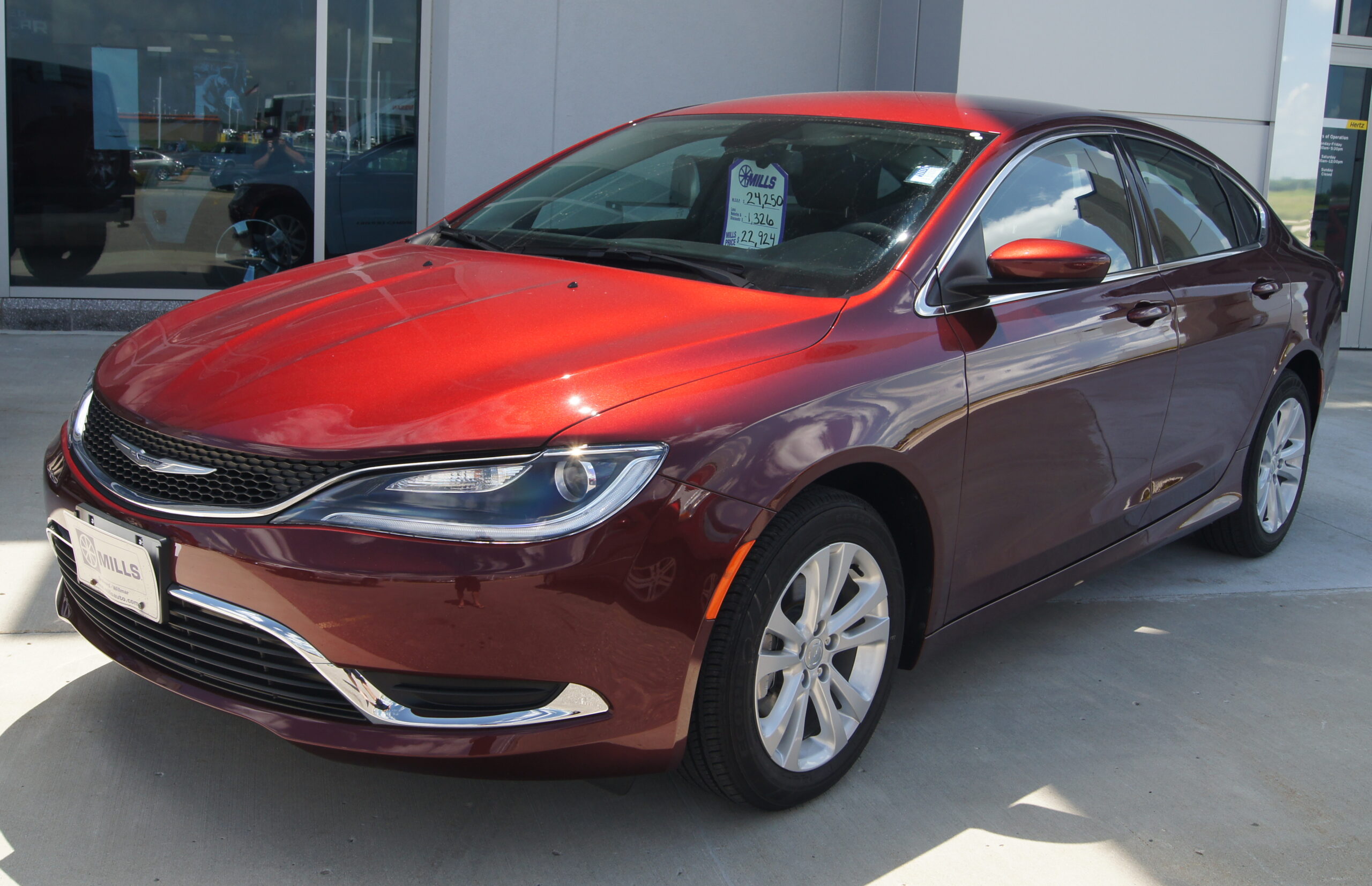
10. **Chrysler 200**The Chrysler 200, a mid-size sedan, represented a significant effort by Chrysler to compete in one of the most fiercely contested automotive segments. While it offered a stylish design and a generally comfortable ride, its production ceased after the 2017 model year, a decision that directly and profoundly contributed to its notably steep depreciation. The very act of discontinuation often sends a clear signal to the market, severely impacting a vehicle’s long-term financial viability.
This rapid plummet in resale value for the Chrysler 200 can also be largely attributed to its struggles against robust competition. It simply couldn’t stand out among more popular and established sedans such as the Honda Accord and Toyota Camry. Buyers were often swayed by the superior reliability ratings and more impressive, consistent performance metrics offered by competing models, leaving the 200 at a distinct disadvantage in the buying landscape.
The discontinuation of the 200 further diminished its appeal to potential buyers. Concerns naturally arose regarding the future availability of specialized parts, ongoing software updates, and reliable long-term service support for a model no longer in production. Such uncertainties create a significant barrier for those considering a pre-owned purchase, driving down demand and, consequently, its market value.
In essence, the Chrysler 200 stands as a classic illustration of a vehicle that quickly loses its worth due to a confluence of factors: challenges in brand perception, intense competition it couldn’t overcome, and a decisive lack of future support from its manufacturer. It began with potential but ultimately failed to retain its value over time, leaving owners with a significant financial depreciation.
Car Model Information: 2013 Chrysler 200 Touring
Name: Chrysler 200
Manufacturer: Chrysler
Production: 2010–2016
ModelYears: 2011–2017
Assembly: Sterling Heights, Michigan
Class: Mid-size car
Sp: us
Predecessor: Chrysler Sebring
Categories: 2010s cars, All articles with dead external links, All articles with unsourced statements, Articles with dead external links from July 2020, Articles with permanently dead external links
Summary: The Chrysler 200 is a mid-size sedan that was manufactured and marketed by Chrysler from model years 2011 to 2017 across two generations in four-door sedan and two-door convertible (first generation only) body styles.
The 200 nameplate debuted on the 200C, a prototype hybrid vehicle shown at the 2009 North American International Auto Show in Detroit and based on the Chrysler 300. The 200C concept was engineered to accept either traditional gasoline, hybrid or full-electric powertrains.
Get more information about: Chrysler 200
Buying a high-performing used car >>>
Brand: Chrysler Model: 200
Price: $7,995 Mileage: 117,030 mi.
Read more about: Planning on Trouble? The 14 Engines and Models Most Likely to Leave You Stranded Before 100,000 Miles
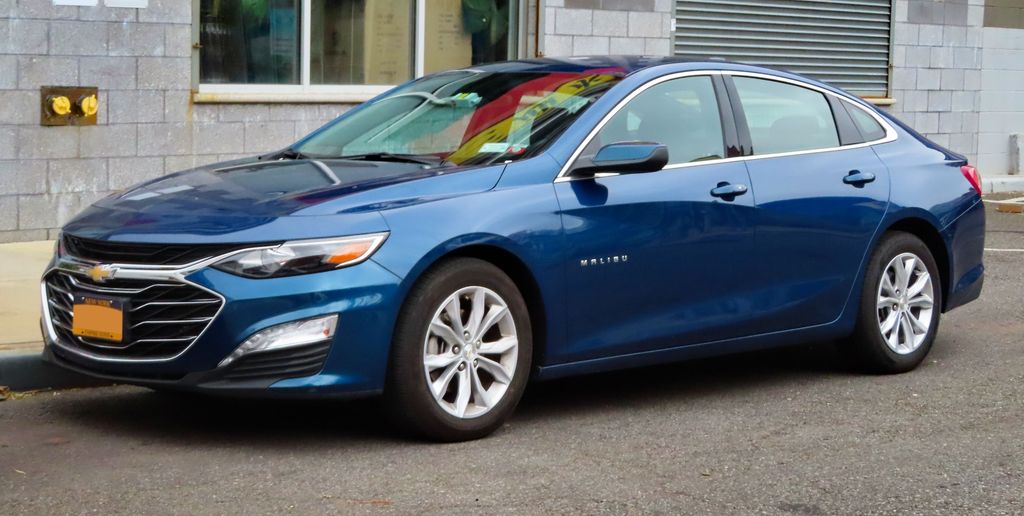
11. **Chevrolet Malibu**The Chevrolet Malibu, a long-standing nameplate in the midsize sedan segment, finds itself struggling intensely in today’s highly competitive automotive landscape. Despite its efforts to appeal to a broad market, the Malibu frequently offers merely average performance, average styling, and average reliability. This pervasive sense of ‘average’ across its key attributes means there’s nothing truly outstanding to help it differentiate itself, which, in turn, contributes significantly to its faster depreciation compared to many of its segment rivals.
A major factor contributing to the Malibu’s rapid loss of value is its frequent use in fleet sales. Much like the Nissan Altima, the Malibu is a common choice for rental car agencies and large corporate fleets. This practice results in a substantial number of used models flooding the market at regular intervals. This oversupply of pre-owned vehicles inherently creates a buyer’s market, making it considerably more challenging for private owners to sell their Malibu at competitive or desirable prices.
Brand perception also plays a pivotal role in the Malibu’s depreciation narrative. While Chevrolet’s trucks and SUVs generally enjoy strong resale reputations and command respect in their respective markets, the same level of confidence and desirability does not consistently extend to their sedan lineup. When searching for a dependable used car, many buyers instinctively turn to brands like Honda, Toyota, or Subaru first, effectively pushing the Malibu further down the pecking order in terms of perceived value and overall appeal.
Ultimately, the combination of its unremarkable characteristics, the consistent oversupply from fleet sales, and a less favorable brand perception in the sedan market collectively ensure that the Chevrolet Malibu depreciates faster than many of its direct competitors. For owners, this translates into a quicker and often more substantial financial loss when it comes time to trade in or sell their vehicle, underscoring the importance of market dynamics beyond initial purchase price.
Car Model Information: 2022 Chevrolet Malibu FWD LT
Name: Chevrolet Malibu
Manufacturer: Chevrolet
ModelYears: 1964–1983,1997–2025
Class: Mid-size car
Layout: Front-engine, rear-wheel-drive layout
Predecessor: Chevrolet Chevelle
Successor: Chevrolet Celebrity
Caption: Ninth generation Chevrolet Malibu
Categories: 1970s cars, 1980s cars, 1990s cars, 2000s cars, 2010s cars
Summary: The Chevrolet Malibu is a mid-size car that was manufactured and marketed by Chevrolet from 1964 to 1983 and from 1997 to 2025. The Malibu began as a trim-level of the Chevrolet Chevelle, becoming its own model line in 1978. Originally a rear-wheel-drive intermediate, GM revived the Malibu nameplate as a front-wheel-drive car in 1997.
Named after the coastal community of Malibu, California, the Malibu has been marketed primarily in North America, with the eighth generation introduced globally. Malibu production in the US ended in November 2024, as the Fairfax plant is being retooled for the upcoming second-generation Chevrolet Bolt. The Malibu is now the last sedan to have been sold by Chevrolet in the US.
Get more information about: Chevrolet Malibu
Buying a high-performing used car >>>
Brand: Chevrolet Model: Malibu
Price: $16,697 Mileage: 67,370 mi.
Read more about: The 15 Most Disappointing New Cars of 2025: Concrete Data Reveals Which Models to Skip
Understanding the nuanced dynamics of vehicle depreciation is an indispensable skill for anyone navigating the complex world of car ownership. As we’ve explored through these eleven examples, the journey of a luxury sedan from showroom glamour to the used car lot can be a swift and financially painful one. Factors ranging from technological advancements and brand reputation to maintenance costs and market demand relentlessly chip away at a car’s worth. Whether you’re making your next purchase or simply aiming to be a more informed enthusiast, recognizing these depreciation traps is key. The vehicles that stand the test of time and hold their value do so by marrying reliability with desirability, creating a lasting legacy that truly makes them worthwhile investments. For the rest, the road to vanishing value is often a fast lane.

